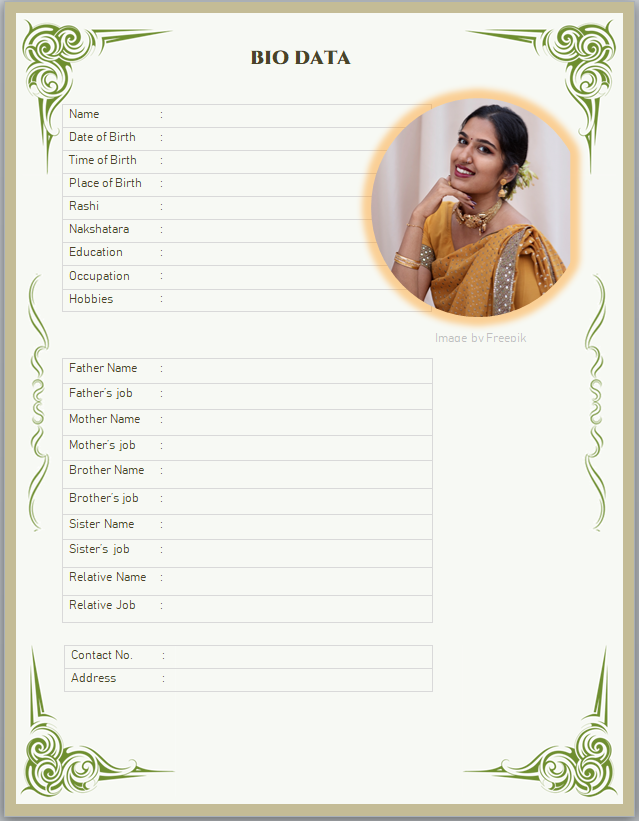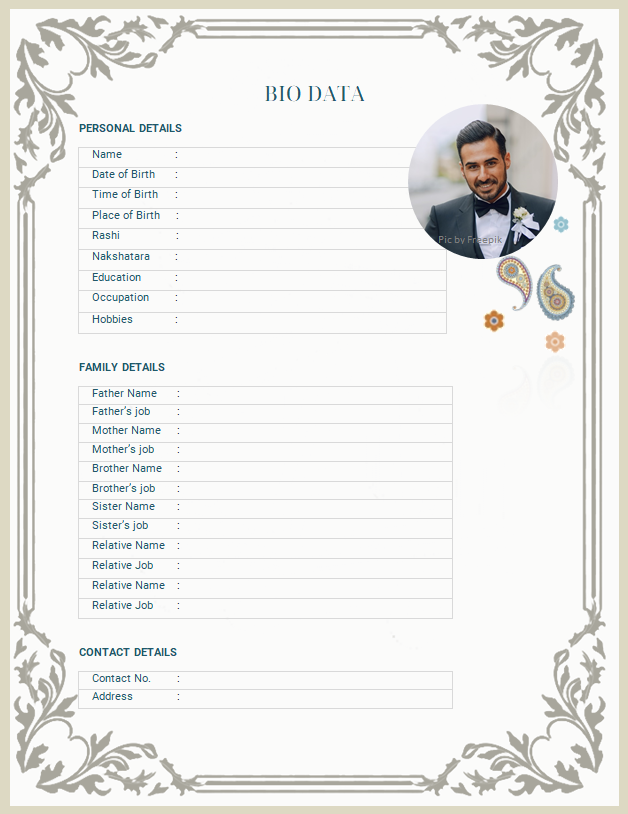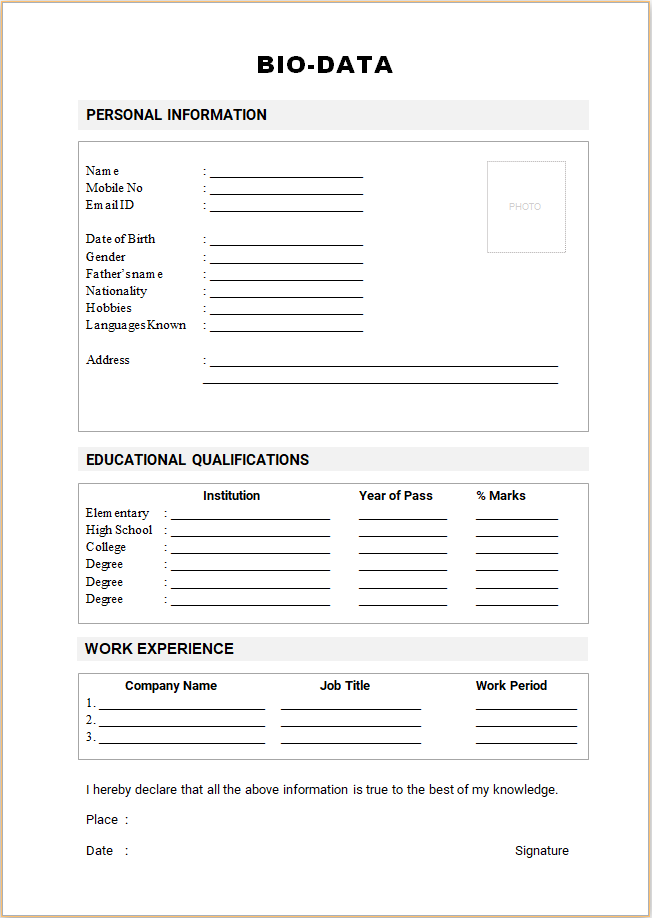Free Marriage Biodata Format
Matrimonial biodata format in MS Word

Biodata format
Marriage Biodata Format Frequently Asked Questions
1. Q: What is a marriage biodata?
A: A marriage biodata is a document containing essential information about an individual seeking a life partner. It includes details such as personal information, family background, education, career, and expectations for a potential spouse.
2. Q: What should be included in a marriage biodata?
A: A marriage biodata typically includes details such as name, age, height, education, occupation, family background, and partner preferences. Additionally, it may include a photograph and other relevant information.
3. Q: How should I format my marriage biodata?
A: Use a clean and organized format. Include sections for personal details, family background, education, career, and expectations. Use clear headings and bullet points for easy readability.
4. Q: Should I include my hobbies and interests in the biodata?
A: Yes, including hobbies and interests can provide insight into your personality. It helps in creating a more comprehensive picture of who you are beyond your professional and educational background.
5. Q: Is it necessary to include a photograph in the biodata?
A: While it's not mandatory, including a recent and clear photograph is advisable. It helps potential matches put a face to the information and enhances the overall presentation.
6. Q: How long should a marriage biodata be?
A: Keep it concise and focused. A well-structured marriage biodata is typically one to two pages long, providing enough information for a comprehensive understanding without overwhelming the reader.
7. Q: Can I customize my biodata based on cultural preferences?
A: Yes, it's common to customize the biodata based on cultural or regional preferences. Include specific details or sections that are relevant to the expectations of your community.
8. Q: How often should I update my marriage biodata?
A: Regularly update your biodata to reflect any changes in your personal or professional life. This ensures that potential matches have the most accurate and up-to-date information about you.
Additional Inputs
Most common mistakes in preparing Biodata
Preparing a marriage biodata is an important step in the matchmaking process, and avoiding common mistakes is crucial for presenting oneself effectively. Here are five common mistakes made in marriage biodata preparation:
Incomplete or Inaccurate Information:
Mistake: Providing incomplete or inaccurate information can create a misleading impression. Omitting key details or providing false information may lead to misunderstandings later.
Prevention: Double-check all details before finalizing the biodata. Ensure that information about education, occupation, family background, and personal details is accurate and up-to-date.
Overemphasis on Material Possessions:
Mistake: Focusing too much on material possessions, such as showcasing expensive belongings or a lavish lifestyle, can give the impression of materialism rather than genuine character traits.
Prevention: Highlight personal qualities, values, and interests alongside professional achievements. Emphasize qualities that contribute to a successful and meaningful relationship.
Neglecting Compatibility Factors:
Mistake: Neglecting to clearly articulate expectations, preferences, and compatibility factors can lead to misunderstandings between potential partners. Lack of clarity may result in mismatches.
Prevention: Clearly outline partner preferences, lifestyle expectations, and any specific compatibility criteria. Be honest about deal-breakers and values that are important to you.
Poor Formatting and Presentation:
Mistake: Neglecting the formatting and presentation of the biodata can make it difficult for readers to extract information easily. Messy or disorganized biodata may create a negative impression.
Prevention: Use a clean and organized format with clear headings and bullet points. Ensure that the biodata is well-structured, visually appealing, and easy to read.
Ignoring Cultural Sensitivities:
Mistake: Ignoring or overlooking cultural sensitivities in the biodata can lead to misunderstandings or potential rejection. Different communities may have specific expectations that should be respected.
Prevention: Customize the biodata to align with cultural preferences. Include relevant details or sections that are important in your cultural or regional context. Pay attention to traditional values and expectations.
By avoiding these common mistakes, individuals can enhance the effectiveness of their marriage biodata and present a more accurate and appealing representation of themselves to potential matches.

